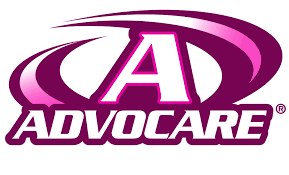
If Mary Kay Was AdvoCare
 By now you have probably heard that last week AdvoCare got tagged by the FTC for $150 million because they’re a pyramid scheme. What? We’re multi-level marketing! We’re direct sales! We’re not a pyramid scheme!!!!
By now you have probably heard that last week AdvoCare got tagged by the FTC for $150 million because they’re a pyramid scheme. What? We’re multi-level marketing! We’re direct sales! We’re not a pyramid scheme!!!!
Indeed, that’s what all MLMs say. And yet, I contend that they’re all pyramid schemes and the action against Advocare should be only the beginning.
Advocare got in trouble for two main things:
- Focusing on recruiting of distributors and getting them to purchase large quantities of products that they can’t ever sell, all part of an illegal pyramid scheme.
- Making deceptive income claims. Recruits were told they could make “unlimited income” and get “financial freedom,” even though the company knew the vast majority of recruits never earn any compensation.
If you’ve spent any amount of time studying multi-level marketing, you’re asking yourself how AdvoCare’s actions are different from any other MLM. They’re not. You take the complaint filed by the FTC in federal court, replace “Advocare” with the name of any other MLM, and you’d probably still be accurate.
So just for fun… let’s do that with Mary Kay. Our beloved Mary Kay is focused on recruiting, even though they talk a lot about sales. Anyone who has been a director knows that your unit is maintained based on new recruits and large initial inventory packages. Cars are earned with the up front inventory packages. Talk as they may about selling the product, any director could tell you that they don’t maintain their unit production based on orders consultants place to replace inventory that they have actually sold to customers. That’s a small fraction of the production.
And the income claims? They abound in Mary Kay.
Here we go with the best parts of the complaint filed by the FTC, with “Advocare” replaced with “Mary Kay” and the health and wellness products replaced with cosmetics. (I’m cutting and pasting the best parts.)
At all times material to this Complaint, acting alone or in concert with others, Mary Kay has advertised, marketed, distributed, or sold a business opportunity to consumers throughout the United States.
Founded in 1963, Mary Kay is a multi-level marketing company that promotes beauty products through a network of business opportunity participants – called Consultants – who can purportedly earn compensation by selling Mary Kay products and by recruiting participants into their “downline.”
To convince consumers to pursue Mary Kay’s business opportunity, Defendants claim that Mary Kay offers the average person a financial solution that will enable them to earn unlimited income, attain financial freedom, and eliminate the constraint of traditional employment. In reality, the overwhelming majority of Consultants never earn compensation from the company.
Mary Kay charges consumers $59 to become a Consultant. Consultants can recruit a downline and earn wholesale commissions ranging from four to twenty-six percent of purchases by certain members of their downline. Consultants receive a discount on products and are eligible to sell products to the public.
However, to earn all possible forms of compensation Mary Kay offers, consumers must become Recruiters. In addition to earning wholesale commissions and being eligible to sell products, Recruiters are eligible to earn overrides, leadership bonuses, and incentives (collectively, “Recruiter income”). Recruiter income is based on the purchase volumes of downline Recruiters and their recruits, with the highest rewards going to those who recruit the most Consultants and generate the most volume from Consultants in their downline. The clear directive of this structure is — as a leading Consultant instructed consumers at Success School, Mary Kay’s marquee annual training event, which all of the Individual Defendants regularly attend and present at—for consumers to “recruit business builders who recruit business builders who recruit business builders. . . .”
Mary Kay’s compensation plan contains recurring incentives to encourage business opportunity participants to purchase large quantities of product. Recruiters must accumulate thousands of dollars of product purchase volume each year to become and remain Recruiters. They must meet volume thresholds to earn Recruiter income each pay period and to advance to higher ranks in Mary Kay, where they can receive bigger bonuses.
Given the incentives for business opportunity participants to continually purchase large volumes of product, product purchases are driven by the compensation plan and not by consumer demand for Mary Kay products.
DEFENDANTS PROMOTE MARY KAY’S BUSINESS OPPORTUNITY THROUGH DECEPTION
To recruit consumers to join Mary Kay, Defendants regularly host events and disseminate materials featuring deceptive income claims. These events and materials include in-person meetings and conferences, webinars, conference calls, podcasts, social media posts, videos, and print materials. One of the most prominent recruiting materials is Applause, a magazine the company produces monthly and sends to all Consultants. Through these events and materials, Defendants promote Mary Kay as a financial solution through which consumers can attain financial freedom and eliminate the constraint of traditional employment.
Mary Kay’s network includes hundreds of thousands of Consultants, and the company coordinates its marketing and training efforts with prominent Consultants who can reach large audiences. In particular, Mary Kay relies on Consultants who reach the National Sales Director rank to market the Mary Kay business opportunity and train others. According to Mary Kay, National Sales Directors are the “best of the best in Mary Kay” and are “the leaders in the field and from the field’s perspective represent Mary Kay.” National Sales Directors routinely record recruiting and training videos for Mary Kay; create print testimonials for Mary Kay; host Mary Kay recruiting and training calls and podcasts; and attend, speak at, and host Mary Kay events.
Defendants Promote Mary Kay as a Life-Changing Financial Solution
Since at least 2014, Defendants have marketed the Mary Kay business opportunity through personal stories touting the improved lifestyle and unlimited income opportunity purportedly available through Mary Kay. Defendants have published thousands of deceptive income claims, and the below claims are mere examples of their conduct:
a. In an August 2018 recruiting video that the company posted on its Facebook and YouTube pages, an Mary Kay Sales Director said that she asks consumers, “What’s that amount per month that you’d like to earn? And then a year from now let’s look at that and let’s decide: is that the same amount or maybe you want to give yourself a raise? The great thing about owning your own business is that you can.” She then showed a graphic of a Consultant with annual earnings of more than $413,000, which she referred to as “astounding income.” Closing the video, she stated that if consumers wanted “a part-time income . . . a full-time income, [had] a desire to be at home with your family, a desire to travel, or to be able to take your family on trips—whatever reason . . . a year from now you will wish you had started today.”
b. At a July 2018 corporate event that was simulcast on one of Mary Kay’s Facebook pages, a National Sales Director spoke of earning $182,000 in her second year, and asked viewers, “where in corporate America can you give yourself a $100,000 raise by working side-by-side with your best friend?” In the same presentation, the National Sales Director’s husband spoke of earning $48,000 over six weeks while qualifying for National Sales Director, and said he asks consumers what they could do with that kind of income.
c. In a June 2018 episode of Mary Kay’s podcast, a National Sales Director told listeners his first-year earnings were “between four and five thousand dollars a month” and that he has gone on to earn a “significant seven figure income.” He also told Consultants success is just about emulating successful people—and that if they do that, “[they are] likely to get the same or similar results.”
To convince consumers that they, too, can attain financial freedom as Mary Kay Consultants, Defendants frequently claim that successful Consultants are simply ordinary people who chose to pursue Mary Kay’s business opportunity:
a. In a May 2018 video posted on Mary Kay.com, a Consultant who purportedly made more than $155,000 in 2017 said that she was drawn to the business after “seeing all of these amazing people” who were “also just ordinary people like [me].”
b. In a May 2018 training, a National Sales Director told consumers he was “an average person . . . We’re just average people, right?”
c. In a May 2018 video, a National Sales Director told consumers, “we all started at the same spot. Just like you. We are no different. I am no different from you.”
Defendants instruct Consultants to tell “emotional,” rather than “factual,” stories.
Finally, Defendants teach Consultants to create a “fear of loss” in recruits, which reinforces the deceptive message that recruits are likely to earn substantial income. For example, at Mary Kay’s Leadership School, a National Sales Director told participants, “‘You can lose $50,000 by not going’ works better than, ‘Hey, you can gain $50,000 by going.’”
After representing that consumers can earn unlimited income through Mary Kay, Defendants have used purported income disclosures to further misrepresent the Mary Kayn business opportunity. Until at least June 2015, Mary Kay excluded non-earners — more than 70 percent of Consultants — from its income disclosure statement, claiming they were not “active.” By excluding these Consultants, Defendants severely inflated the percentage of Consultants in each purported income range.
The income ranges on Mary Kay’s income disclosure statement were reported as “annual average income” but were actually annualized earnings based only on pay periods where Consultants earned checks. For example, if a Consultant participated in Mary Kay for a full year and earned just one check, Mary Kay multiplied the check by the number of pay periods in the year to calculate the annual average income. One year of income consisting of one $100 check would thereby count as $2,400 in average annual income. The company printed these purported income disclosures onto posters and sold them to Consultants to use as sales aids.
Contrary to Defendants’ claims, Mary Kay does not offer consumers a viable path to financial freedom. In 2016, 72.3 percent of Consultants did not earn any compensation from Mary Kay; another 18 percent earned between one cent and $250; and another 6 percent earned between $250 and $1,000. The annual earnings distribution is nearly identical for 2012 through 2015.
The opportunity to earn compensation retailing product is similarly limited. Mary Kay does not allow Consultants to publicly offer a discount on products and does not allow Consultants to sell products through ecommerce channels other than MaryKay.com.
Departure rates demonstrate that Consultants struggle to retail products. In 2013 and 2014, just 37 percent of Consultants without a downline — who therefore needed to retail products to earn compensation — remained in Mary Kay past one year.
Mary Kay’s compensation structure requires participants to make large purchases to qualify and remain eligible to participate fully in the business opportunity. However, the opportunity to earn compensation as an Mary Kay Consultant is limited. As a result, Mary Kay’s compensation structure ensures that most participants will lose money or will not realize significant income.
MARY KAY OPERATES AS AN UNLAWFUL PYRAMID SCHEME
Mary Kay’s Compensation Plan
Mary Kay’s compensation plan is based on becoming an Recruiter and recruiting others to do the same. Mary Kay allows all Consultants to earn retail and wholesale commissions. However, only Recruiters are eligible to earn overrides, leadership bonuses, and incentives (collectively, “Recruiter income”). In turn, Recruiter income can only be earned from product purchases generated by downline Recruiters.
Once they become Sales Directors, Consultants must keep meeting volume requirements to earn compensation and to remain Sales Directors. Each pay period,
Through this structure, Mary Kay encourages consumers to (a) purchase large volumes of products regardless of retail demand in order to participate fully in the business opportunity and to (b) “duplicate” themselves by recruiting business opportunity participants who will also make large purchases.
Mary Kay encourages Consultants to personally purchase products to satisfy compensation plan requirements. Mary Kay requires Consultants to either purchase large quantities of product or convince others to do so in order to (a) qualify for Recruiter and be eligible to earn Recruiter income; (b) requalify for Recruiter and remain eligible to earn Recruiter income; and (c) earn Recruiter income in a given pay period.
Mary Kay has also instructed Consultants to personally purchase products in order to qualify for Recruiter in its compensation plan. Until at least November 2014, the plan instructed Consultants “to purchase at least $500 yourself” and to always “track your volume . . . and if necessary, cover the $500 Personal Volume with your own purchases” to ensure they would have the volume needed to qualify for Recruiter.
Consultants, including at least 35 National Sales Directors, also often purchase products on other Consultants’ accounts in order to maximize their own bonuses. Some did this for years with the company’s knowledge; one even received Consultants’ passwords from a company employee in order to place orders in his downline.
Recruiting is so critical to Mary Kay’s success that the company carefully tracks its recruiting numbers and regularly reports those figures to key executives and board members. Mary Kay reinforces its emphasis on recruiting business opportunity participants through periodic incentives. For example, between 2014 and 2016, the company ran a Rookie Bonus incentive rewarding Consultants who became Recruiters, recruited at least three Consultants, and generated at least $3,000 wholesale volume from new recruits. To encourage Consultants to focus on recruiting business opportunity participants, the company excluded volume from Consultants’ retail customers who ordered product directly from Mary Kay.
Diane McDaniel also frequently dismissed retail earnings as “fun,” rather than “real,” money. In 2014, she told a Consultant that recruiting customers was “fun but a very slow way to build anything.” In 2015, she trained Consultants at a corporate event to never assume people know about the fun money versus the real money in Mary Kay.
In a 2012 training document on how to run a business opportunity meeting, the McDaniels told Consultants to quickly show recruits how to earn retail and wholesale commissions—and to then “let them know that you are going to show them how we really earn money in this business . . . through the two types of RESIDUAL income that Mary Kay provides.”
The parallels between AdvoCare and Mary Kay are many. Sure there are small details and words that are different, but the bulk of the scheme is the same

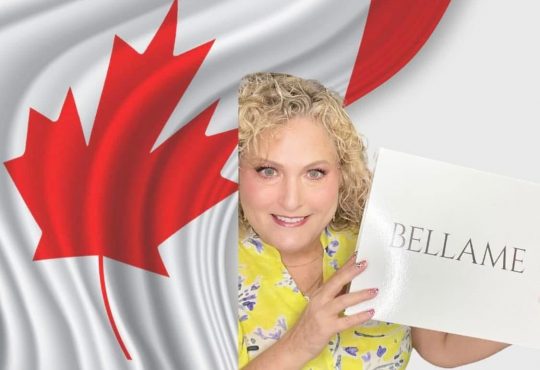
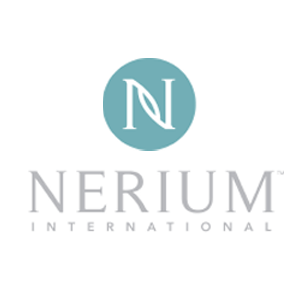
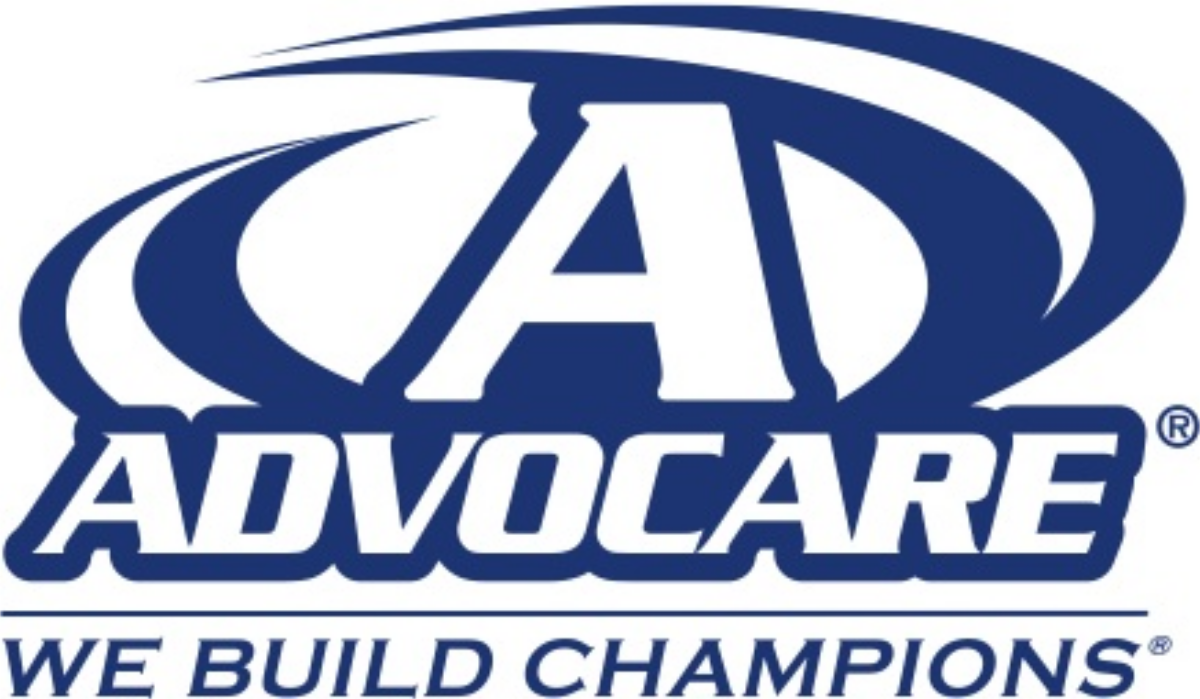
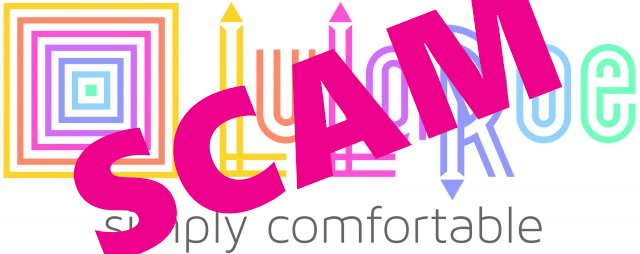
 Visit the
Visit the
Being able to interchange company names should come as no surprise. Unfortunately, there is a misunderstanding about “MLMs”, and it is that very term. MLM stands for multi-level marketing, and that is not a company. It is a method. The practical definition of that method never changes. This is key to anyone’s overall understanding of MLM. (Notice I didn’t write “an MLM”)
Just like with other acts, circumstances can change but not the definition of the act. Examples:
Cheating at cards, cheating on a test;
Robbing a bank in Kentucky, robbing a jewelry store in Timbuktu;
Stealing green money, stealing old cars, stealing organic vegetables
MLM-ing is endless-chain recruiting. Advocare’s own words state this is needed to survive and thrive when doing MLM. Endless-chain recruiting is pyramid scheming. Multi-level marketing requires the same M-O regardless of where you do it.
Don’t get tricked into changing MLMing companies thinking you are doing something different. You’re not. And MLMer is an MLMer, and a cheater is a cheater.
The sheer number of products that MK has is overwhelming. It is designed to compel ordinary women to continuously place orders. “You can’t sell from an empty wagon” is MK’s way of urging everyone to buy most products. Also we inadvertently feel the need to get extra basic sets. After all you can never ever break up that set. bahaha…. Ya right. Add in there the guessing game of eye shadows, lipsticks, mascaras, blush and foundation etc. It’s very expensive and near impossible to guess what to buy. Then those useless Christmas products. Cheap perfumes, mens products and lotions. What a waste because no one comes to the Christmas Open Houses. No one comes to the kiosks at fairs etc. Women everywhere know to avoid those mlm style over priced companies. All that extra work making up baskets and giving out free samples hasn’t worked since the 1960’s. On top of that MK is indifferent to the financial burden and abuse they cause with having far too many products. They constantly change the product line on purpose. This pressures women into buying the new products and increasing their MK debt.
I personally think that many women buy makeup no matter what. It’s there choice who they buy it from. If I walk into to popular beauty store or body shop, I am
bombarded with products and “specials” to get met to buy more or hooked. If I go
to a department store cosmetic counter, which I have several times in my life, I am upsold. Store front business change their products all the time: new bras, new sents, new fashions and trends—more and more and more items all the time. It’s marketing at its best.
I use to be a secret shopper and all companies of all types try to get you to buy more. I got paid to evaluate if employees were offering more and more “would you like to super size that” or “would you like the large popcorn”. Sounds like it’s not a Mary Kay thing but consumerism as a whole. And the end of the day,
we have a choice in what we purchase. We can be a slave to consumerism or not.
Ree,
A wholesaler sells to the store and then the store sells to you, the customer. The store is focused on selling to the CUSTOMER – hence all the incentives to buy.
If this model were true in MK, then MK is the wholesaler, the IBC is the store, and there would be customers the IBC sold to. Unfortunately, the MK model is NOT about selling products to end users (customers). It is about recruiting people and getting them to buy large inventory orders. Therefore, the IBC is technically the customer and there is no actual store.
Sigh. MLMing is not about a retail department store selling it’s products. Comparing it to one is the wrong argument. Please study up on MLM, and don’t get your information from the scammers who do it. They will spin you a yarn.
Tip: Opportunity selling, aka MLMing, isn’t about the products. It’s about endless-chain opportunity selling using products to mask the scheme.
My question is, how did Advocare get the attention of the FTC? The business model is the same for all MLM, but they got singled out? Was it because of distributors going after them?
I think there complaints to the FTC by distributors.
MKC has launched “31 Days of Selling”, encouraging the sales-force to talk about products on their social-media accounts.
“It’s not a pyramid scheme. Pyramid schemes are illegal.” When you hear this, it is the perfect opportunity to say, “Advocare is an MLM just like Mary Kay. Advocare was found to be operating an illegal pyramid scheme. What makes Mary Kay different from Advocare?”
Hopefully the hun will then google it and land on this page!
And of course you can substitute any MLM-based company for Mary Kay to see the striking resemblance between these “legal” and “illegal” schemes.